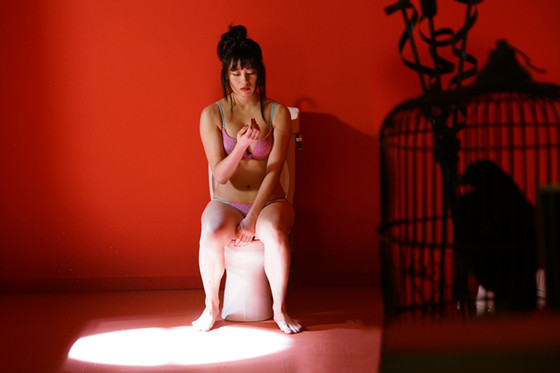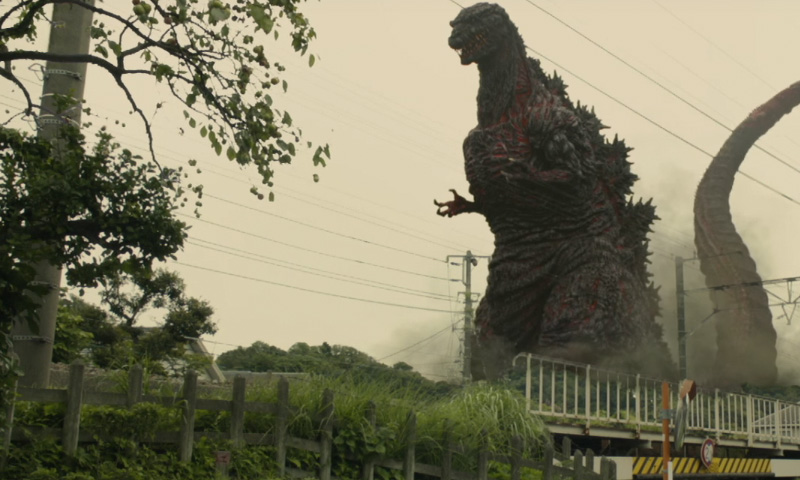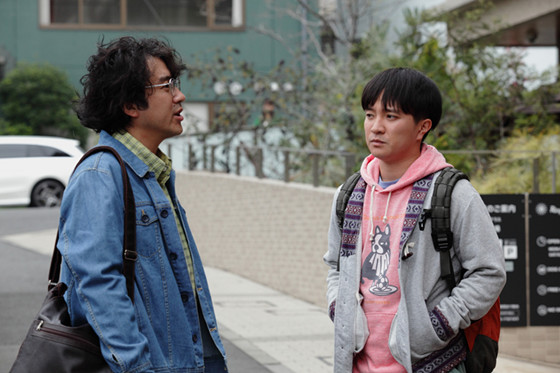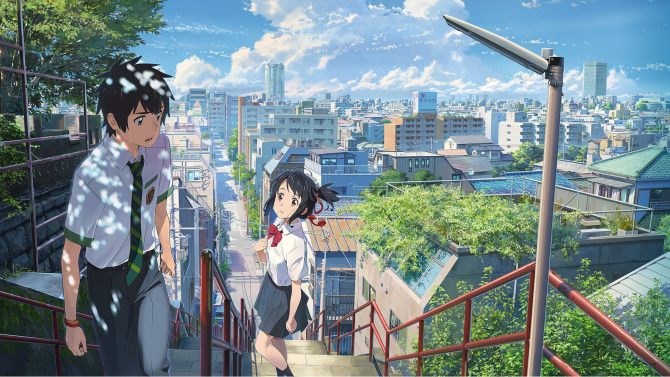5. Lowlife Love (Eiji Uchida)

Tetsuo is a film director who had mild success with a film he shot some years ago, but has not produced anything from that point on and his life is in shambles. He is 39 years old, he still lives with his parents and sister in a small house, and has a constant lack of money. His miniscule income comes from some overpriced acting lessons he gives to a number of students he has promised to include in his next film, and from shooting AV videos that he sells to some Yakuza via his assistant, Yoshihiko.
Eventually, hope appears in front of him in the faces of two new students: Minami, a timid and naive girl who wants to be an actress, and Ken, a scriptwriter. Both of them appear to be extremely talented and Tetsuo believes he will be finally able to shoot a film in the way he wants. Around those characters roams Kida, a suspicious producer and former director; Kyoko, a ruthless aspiring actress; Kano, a former indie director who has become commercially successful; and Kaede, a girl obsessed with Tetsuo.
Eiji Uchida centers his film on the two words of the title. The first one actually describes the various characters appearing in the film, not one of whom appears to be decent or unselfish. The one on the top, however, is definitely Tetsuo, played in a suitably awful fashion by Kiyohiko Shibukawa. His character is immature, lazy, devious, and in constant readiness to exploit everyone around him to achieve his goals of shooting a moneymaking film and having sex.
The overall depiction of the no-budget industry is gruesome, especially for actresses, who are presented as prey for the male filmmakers, particularly because they are intent on shagging their way into movies. The approach the director takes towards them borders on misogyny, although he stresses the fact that since the directors are not even slightly better humans than them, sex is actually their only way to make it.
In that fashion, Uchida presents another pessimistic message, that of total hopelessness in the industry for them all, a notion that becomes even more evident in the ending scene.
However, somewhere in all of this, Uchida managed to include some humor, chiefly through the behaviour of Tetsuo, Kida, and Kaede. One of the most hilarious scenes of the film takes place in Kaede’s room, where she keeps a picture of Tetsuo’s head on the wall, occasionally writing her opinion of him on it.
4. Anti-Porn (Sion Sono)

“Anti-Porn” is quite difficult to describe, since the borders between fantasy and reality, and past and present, are almost non-existent. In that fashion, the film starts with Kyoko, a famous novelist and artist, who wakes up in a studio bursting with a yellow color, except the toilet, which is vividly red. There is obviously something wrong with her, as she starts to rave about anything that comes to her mind, without actually making sense, like when she shouts “I am a virgin and a whore.”
Things become even more frantic when her assistant, Noriko, enters the studio. She seems to be utterly subservient to Kyoko, who treats her as harshly as possible, both psychologically and physically. A little later, an editor and a photographer arrive along with their three assistants, all of whom are extravagantly dressed, not to mention that two of the assistants are wearing strap-ons.
A little later, it is revealed that the whole setting was part of a film shoot, and that the actual star is Noriko, who treats Kyoko in reality as she in the film. The rest of the movie shows Kyoko’s past and the reasons that led her to the porn industry, in a highly surrealistic fashion.
Sion Sono directs a film that looks more like a theatre play than an actual movie, at least for its largest part, as it unfolds inside a single set. Apart from that, Sono seems to be in his element, as the total artistic freedom he was offered allowed him to let his extreme artistry run amok.
In that fashion, the film includes lesbian sex, plenty of abuse, the protagonist throwing up every time she is about to have an orgasm, and women running around naked for no apparent reason. That is when he is not being completely blasphemous, as the film also shows, a number of times, Kyoko’s parents having sex and her watching, when she was a teenager.
Apart from the evident shocking element, though, Sono makes a clear comment regarding the porn industry, exhibiting how futile and hypocritical it is. Furthermore, he extends the same comment to the world of art, which is being portrayed as even more futile and hypocritical, but also utterly pretentious.
3. Godzilla Resurgence (Hideaki Anno, Shinji Higuchi)

The film follows the regular script of the franchise, as an unknown, gigantic creature appears in Japan from the sea, wreaking havoc as it moves through Tokyo. The Japanese government is tangled in the nets of bureaucracy, and the top officials, including the Prime Minister, are reluctant to act. Furthermore, they soon realize that the creature, now named Godzira (the Japanese version of the name), is emitting radiation, and that it is transforming, becoming even bigger in the process.
Eventually, Rando Yaguchi is put in charge of a special task force to investigate the creature and to find ways to stop it. The initial attacks by the JSDF have no effect on it, while the US government, which seems to have its own agenda, sends Kayoko Ann Patterson as a special envoy to deal with the situation. As a nuclear attack falls on the table, Yaguchi and his team must find a way to stop Godzira before the catastrophe spreads all over Japan.
Hideaki Anno directs a very different Godzilla movie, with the help of Shinji Higuchi, who is also responsible for the outstanding special effects. The film has a very fast pace and very sharp editing, as the setting changes constantly, and the presentation looks like a news forecast on TV. In that fashion, and by presenting the consequences first, Anno manages to build the tension before the monster appears.
Furthermore, through the transformations (each one is more impressive that the last), he manages to retain the agony for quite some time. In that fashion, when Godzilla eventually appears in its full form, the impact is huge.
The special effects team has done superb work on both the design and the movement of the monster, while the destruction scenes are more impressive than ever.
Along with the association with the 3/11 earthquake, the Fukushima disaster, and the atomic bomb, by realistically presenting the way the Japanese government and army works, and the comment about the US government’s role in global affairs, “Godzilla Resurgence” is probably the most meaningful entry in the franchise.
2. Hime Anole (Keisuke Yoshida)

Based on the homonymous manga series by Minoru Furuya, the film starts as a comedy-drama, from the plethora that comes out of Japan. In that fashion, the central heroes are two awkward individuals, Susumu Okada and Yuji Ando, who work for a cleaning company. Yuji talks like a robot and seems to lack any kind of social skills, and Susumu is an unambitious youth who is troubled by the fact that his life seems to have no meaning whatsoever.
Eventually, Yuji tells Susumu that he is in love with a waitress at a cafe, Yuka Abe, and asks his help to get to know her. The first time they come to the shop, Yuji points out another man who seems to be constantly there, also having an interest in Yuka. This man, Shoichi Morita, proves to be Susumu’s former classmate. Soon, Yuka informs them that Morita is stalking her, and they decide to “protect” her. Furthermore, the girl seems to have a crush on Susumu, bringing him into an awkward position.
The second part, however, changes the focus to Morita, and with that comes a total change in the film itself. Morita proves to be a psychopathic criminal, and starts a killing and raping spree against anyone that gets in his way. His final targets, though, are Yuka and Susumu. Two characters that also appear in the first part, another classmate and his girlfriend, prove to be the ones that instigate this mania.
Keisuke Yoshida manages to elaborately merge two films into one, as the transition between the two parts is utterly smooth, despite their many differences. The fact that the second part, containing violence, gore, and sex, comes after the first one (which could be rated PG-13), is a very unusual tactic, but Yoshida made the most of it.
The same applies to the messages he presents, as the first part shows the lives of the people living on the borders of society and where that can lead them, while the second highlights the consequences of bullying and violence in general.
This transition between the two parts is portrayed through an intricate and very impressive scene. As Susumu and Yuka have sex, Morita tortures and kills a woman, as the setting switches a number of times and the moves of each “couple” mirror each other in the most unsettling fashion.
The scene exemplifies the direction, the camera work, the editing, the sound, and the special effects of the film, whose prowess becomes evident, particularly in the violent scenes of the second part. Some of them are truly grotesque, particularly the ones that involve rape, as the movie fills up with exploitation elements.
1. Your Name (Makoto Shinkai)

Mitsuha, a high school girl from the small town of Itomori, has a very complicated life. Her mother’s family has been in charge of the local Shinto shrine for generations, and since her father has abandoned them to become the mayor, the task has fallen on her and her sister, under the tutelage of their grandmother. Furthermore, she has started having some very peculiar and very vivid dreams, while she seems to exhibit some strange behaviors at school, which she remembers nothing about.
Eventually, she realizes that occasionally she takes the place of a high school boy from Tokyo named Taki, and vice versa. As the two of them start to fathom what is happening to them, they try to find a code of communication in order to keep their lives from being ruined. After some time, they start getting along, but soon tragedy comes knocking.
Makoto Shinkai took the common concept of “changing lives” and placed it on a completely new and much more meaningful level. Through this notion, he presents his thoughts on concepts like memory, time, family, the Fukushima disaster, human relations, and more than anything, love – a power that transcends everything.
Furthermore, he managed to portray all these in a very entertaining fashion, since the anime elaborately combines comedy with drama, very interesting characters, a sense of nostalgia, and agony, particularly in the end.
Technically, “Your Name” is a true masterpiece, as it features astonishing animation and outstanding drawing. The attention to detail is on such a high level that the overwhelming majority of the frames look like paintings. From the way the sun shines on the sea to the way the leaves of the trees move in the wind, everything has been drawn and animated to perfection. The fact that the production features many different locations, both in rural Itomori and urban Tokyo, heightens this elaborateness even more.
Author Bio: Panos Kotzathanasis is a film critic who focuses on the cinema of East Asia. He enjoys films from all genres, although he is a big fan of exploitation. You can follow him on Facebook or Twitter.